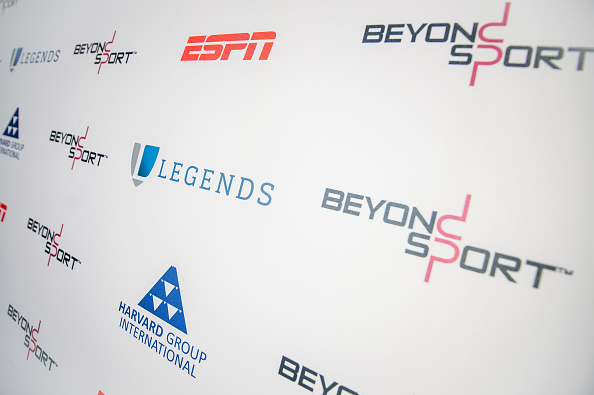Digital Disruption in the Sports industry
Not many years back, digital platforms were being used for the most unimportant work for any rightsholder in the sports industry. Sure they all have their official websites and marketing strategies were kept in place but they were more of a stroke of brush and paint on a bigger canvas.

Digital platforms were not included in the main business model for most organisations a few years back. One small step was taken to tap into the vast possibilities of the digital platform through social media and improved infrastructure, and the world welcomed the digital age. The massive use of digital platforms led the sports rights holders to start using digital technology to reach a far wider audience groups with never ending content and services, that could not have been possible six years ago. This change was to associate and link the sports entities (teams, clubs and players) with the fans in a new and effective manner. This change was termed as Digital Disruption.
There are many important manifestations of this change. Just like when sponsorship was introduced in the sports industry, it played a major role in shaping the way the entire industry functioned. Similarly, digital disruption has caused a massive rippling effect in the sports market and like a chain reaction, it will keep on growing. It is, therefore, very important for the sports entities to realise the key points that can lead to digital stability.
OTT (Over The Top) Content and Revenue
OTT allows the direct streaming of the game content to the viewer without involving a third party broadcaster. This, in turn, helps the sports entity to generate revenues. The most recent of this case is the Major League Baseball’s digital division BAM, which generates about $750 million just through subscriptions from streaming baseball to fans through app and web platform. According to a report by Wall Street Journal in 2014, the most expensive channel in the United States that generates most revenue is not any entertainment channel that telecasts your favourite sitcom or reality show. Rather, it is a channel that will have your least attention, but "quality attention" nonetheless. This channel is none other than ESPN. ESPN held the top rank as the highest earning network to be paid by the channel providers. The amount was held at $6.04 per person.
There is, however, a drop in the cable service. Since 2010 the ratio of people dropping cable has gone from 1 in 8 to 1 in 5. Many entities have decided to become D2C (Direct to Consumer) than being B2B. However, the recent increase in OTT media streaming services is not the result of consumers reducing or eliminating their cable TV service. It is much more because of cord shaving. While the big fishes have expanded their reach through OTT, it’s the small fish, the small entities that are too small for the tv exposure.
Revenues of Sponsorship
Physical and tangible ways of advertising have their own side effects. At one point of a given game, it is not possible to accommodate all the set of sponsors and not many who are physically absent from the stadium pay attention to them either, as their main focus is on the game. Digital platforms have many benefits to
It's more effective if the brands act on the already available pool of audience than to make one of its own. This form of sponsorship is indirect, yet, is the most effective and cost saving technique. Long gone are the days of signing a sponsorship contract on the basis of the club fan size or the number of impressions.
Fan engagement
A fan may not be eager to spend some amount, travelling time, to visit a stadium to watch his favourite game. He may choose to do so through the comforts of his home. As many fans are choosing the latter, due to the number of tickets available, it has become very important for the clubs and teams to broaden the horizon of experiences that also includes the digital consumers. Right from a fan who is buying a game’s ticket weeks in advance to a fan who is paying a subscription fee to watch the game, the technology should take everything
Moreover, special attention is now being paid to attract more consumers to the stadium as the ‘sit at home and enjoy live’ technology costs the sports franchises a lot more than a slight setback.
With the introduction of the digital age, many brands have come up with the real-time analysis solution for quick results. Wearable technology is a major part of it. Digital analysis has revolutionised the way a game can be seen. From the heart rate readings of a player to the accurate speed of a hit and the hit effect, it all looks impressive. Wearable technology in form of arm-band or smart watch can provide some of such crucial information that can in turn help with the effective and personalised training schedule. Wearables can also help to monitor the player’s health and safety. On the business side, sports entities can get data through social media and new insights into fan preferences and behaviours, and give entities and sponsors new opportunities to innovate in fan engagement.
As of now, digital disruption in the sports industry is all about the reordering of the current chain of value amongst existing players rather than the arrival of new entities with revolutionary value propositions. Progress will not be at same scale. For some, it will be as easy as a walk in the park, while for some entities, it will be a whole new journey in the future of the sports. Every new technology has brought with it the scope of excellence and opportunities and also the destruction of the old and orthodox sports practices. Therefore for many rightsholders, it will be all about innovating new ways of sustaining the customer base, strengthening the fan relationship, but more importantly, cash in on the already present source of revenues.

Comments
Sign up or log in to your account to leave comments and reactions
0 Comments